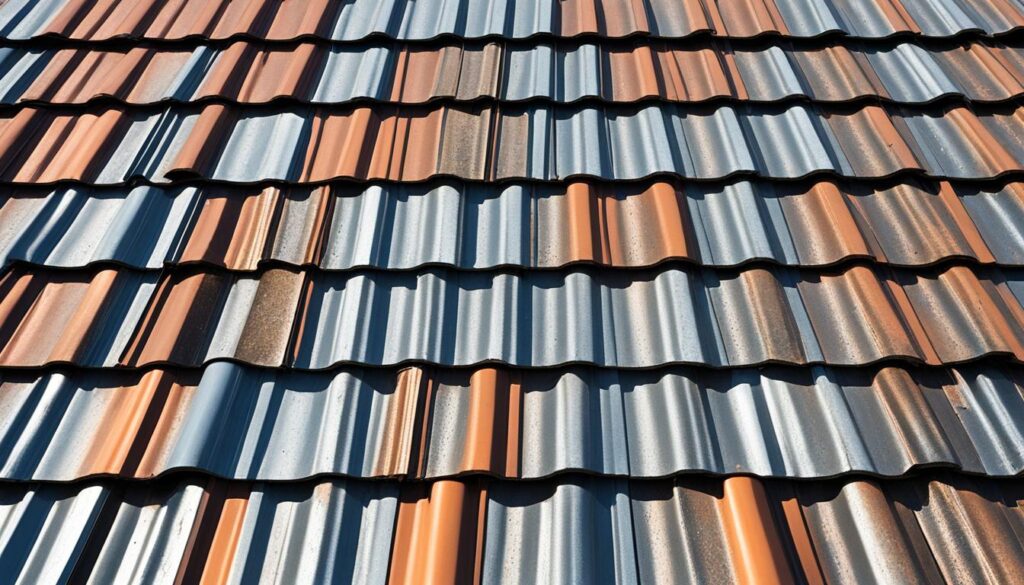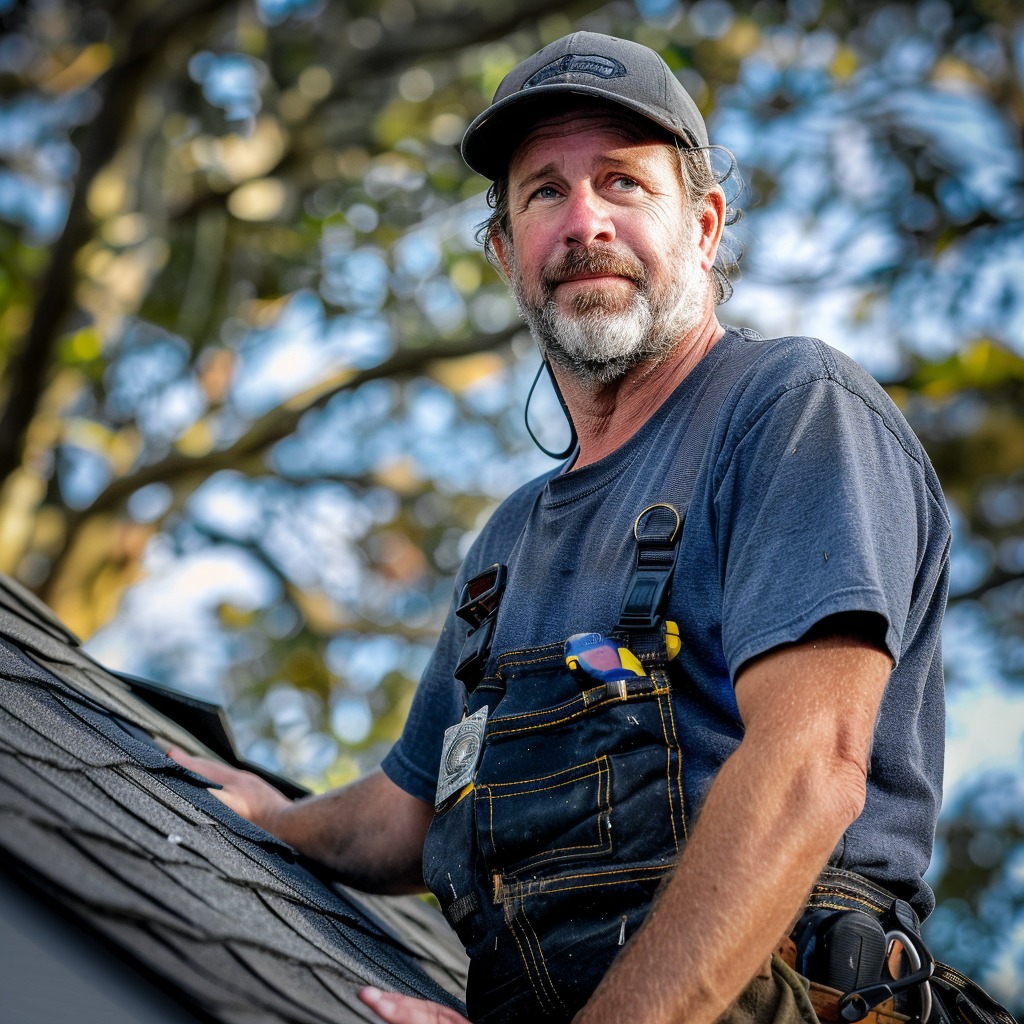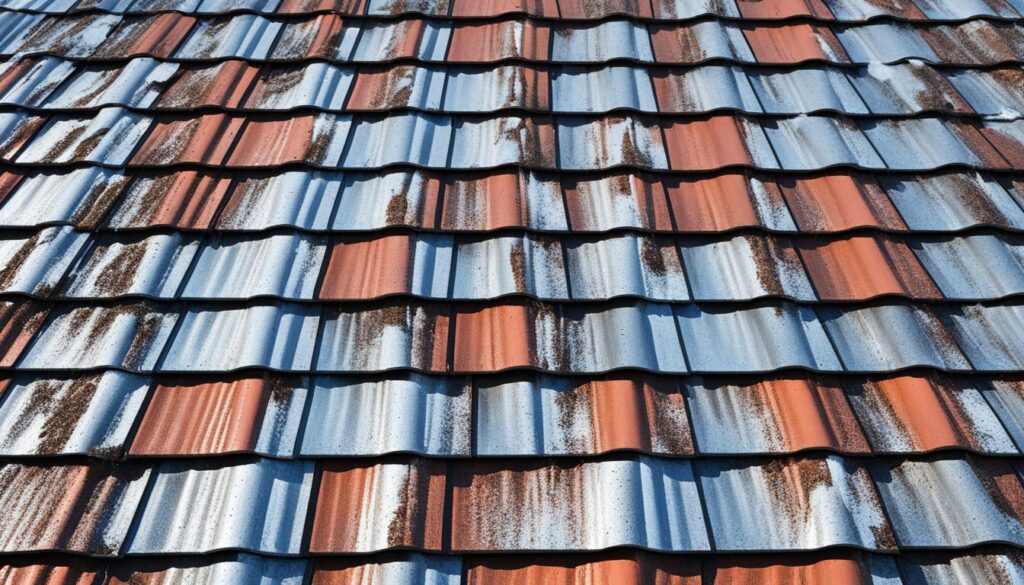How long does a metal roof last? What is the average metal roof lifespan? Is it really as durable as people say? If you’ve ever wondered about the longevity of a metal roof and its ability to withstand the test of time, you’re not alone. Many homeowners and businesses are curious about the durability of metal roofing and whether it lives up to the hype.
When it comes to roofing materials, metal roofs are known to stand strong for decades. In fact, a well-maintained metal roof can exceed 50 years of service, making it an attractive long-term investment. Unlike other roofing materials, metal roofs are highly resistant to common issues such as rot, insects, mildew, and decay, ensuring they remain in top condition for years to come.
Key Takeaways:
- Metal roofs have an average lifespan of over 50 years.
- They are highly durable and resistant to common roofing issues.
- Proper maintenance is crucial for maximizing the longevity of a metal roof.
- Regular inspections and prompt repairs can prevent further damage.
- Hiring experienced roofing contractors for installation is key to ensuring long-term durability.
Factors Affecting Metal Roof Lifespan
Several factors can influence the lifespan of a metal roof. To ensure its longevity, regular maintenance and proper installation are crucial.
First and foremost, regular maintenance is essential for maximizing the lifespan of a metal roof. By inspecting the roof periodically for any signs of damage such as scratches, dents, or loose fasteners, property owners can address these issues promptly, preventing further deterioration. Regular maintenance also helps identify and fix minor problems before they escalate into major issues that can compromise the integrity of the roof.
Additionally, hiring experienced roofing contractors for proper installation is key. A well-installed metal roof can greatly enhance its durability and lifespan. Experienced professionals ensure that the roof is correctly fitted, with secure fastenings and proper insulation. They can also provide valuable advice on maintenance practices and potential repairs, further prolonging the lifespan of the roof.
By prioritizing regular maintenance and professional installation, property owners can significantly increase the lifespan of their metal roof, providing long-term protection and peace of mind.
| Factors | Description |
|---|---|
| Quality of Materials | The quality and grade of the metal used for the roof can impact its lifespan. |
| Weath | Extreme weather conditions like hail, heavy rain, snow, and high winds can cause damage to the roof. |
| Maintenance | Regular inspections, cleaning, and addressing issues promptly can extend the lifespan of the roof. |
| Installation | Proper installation by experienced professionals ensures the roof’s longevity. |
| Ventilation | Proper ventilation prevents moisture buildup, which can lead to premature corrosion and damage. |
Types of Metal Roofing
In choosing a metal roofing material, it’s important to consider the longevity and durability it offers. Different types of metal roofs have varying lifespans and unique qualities. Here are some popular options:
1. Steel Roofing
Steel roofing is a cost-effective option that provides a good balance between affordability and durability. It is known for its strength and resistance against harsh weather conditions. Steel roofs can last up to 40-70 years with proper maintenance.
2. Aluminum Roofing
Aluminum roofing is renowned for its lightweight nature and exceptional corrosion resistance. It is an ideal choice for coastal regions where salt exposure is prominent. Aluminum roofs can last up to 50 years or more.
3. Copper Roofing
Copper roofing offers both longevity and exquisite aesthetics. It is highly durable and has natural corrosion resistance. Over time, copper roofs develop a unique patina that enhances their appearance. With proper installation and maintenance, copper roofs can potentially last for a century or more.
4. Zinc Roofing
Zinc roofing is known for its modern aesthetics and self-healing properties. It forms a protective layer called patina, which helps prevent corrosion. With proper care and maintenance, zinc roofs can have a lifespan of 60-100 years or more.

Energy Efficiency and Environmental Benefits
Metal roofs offer several energy-efficient benefits that make them an excellent choice for environmentally-conscious homeowners and businesses. One of the key advantages of a metal roof is its ability to reflect sunlight, reducing cooling costs during hot summers. The reflective properties of metal roofing materials prevent the absorption of heat, keeping the interior of the building cooler and reducing the need for excessive air conditioning. This not only saves money on energy bills but also contributes to a more sustainable and energy-efficient living or working environment.
But the benefits don’t stop there. Metal roofing is also highly environmentally friendly due to its recyclability. Unlike other roofing materials that end up in landfills at the end of their lifespan, metal roofing materials can be recycled into new products. This reduces the environmental impact associated with the extraction and production of new materials, as well as the waste generated by roofing replacements. By choosing a metal roof, you are making a choice that supports sustainability and promotes a circular economy.

Conclusion
Metal roofing is a durable and long-lasting solution that surpasses the expectations of homeowners and businesses alike. With an average lifespan exceeding 50 years, metal roofs prove to be a wise investment, providing longevity and peace of mind.
One of the key factors contributing to the durability of metal roofs is their remarkable resistance to common roofing issues such as rot, insects, and mildew. These roofs remain resilient and maintain their structural integrity even in the face of harsh weather conditions.
To maximize the lifespan and durability of a metal roof, it is essential to consider several factors. Regular maintenance, which involves inspecting for any scratches, dents, or loose fasteners, is crucial. Addressing these issues promptly helps prevent further damage and ensures the roof remains in top condition.
Choosing the right type of metal roofing material is another important factor to consider. Steel, aluminum, copper, and zinc are some popular options, each with its own specific advantages. Ample research and consulting with experienced roofing contractors can help property owners make an informed decision.
Not only are metal roofs durable, but they also offer energy efficiency and environmental benefits. Their reflective properties help reduce cooling costs during hot summers, contributing to energy savings. Additionally, metal roofing is highly recyclable, making it a sustainable choice and minimizing environmental impact.
Ultimately, metal roofing proves to be a reliable and resilient option with a long lifespan, unmatched durability, and numerous advantages. By considering factors that affect lifespan, conducting regular maintenance, and selecting the right type of metal roofing, property owners can enjoy the benefits of a lasting and sustainable roof for decades to come.

Meet William Adams, a seasoned roofing expert with over 30 years of hands-on experience in the industry. Having worked tirelessly under the scorching sun and through the fiercest storms, William brings a wealth of knowledge and expertise to the table. Hailing from the heart of the USA, he’s witnessed the evolution of roofing practices firsthand, mastering every aspect along the way. Now retired from the field, William spends his days cherishing time with his loved ones while sharing his invaluable insights through this platform. With William at the helm, you can trust that every tip, advice, and recommendation provided is backed by years of real-world experience and unwavering dedication to quality craftsmanship. Join us as we journey through the world of roofing, guided by the wisdom and passion of a true industry veteran.

